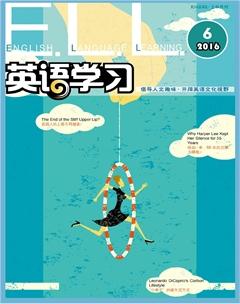寿司之神
By Silvia Killingsworth
Perfect Sushi
One of the hardest reservations to get in the world is a seat at Jiro Onos sushi counter, a three-Michelin-star restaurant adjoining the entrance to the Ginza metro station, in the basement of a business building in Tokyo.1 A meal there, which consists of 20 pieces of sushi served one at a time, costs 30,000 Japanese yen2 (about 370 dollars), and lasts about 15 or 20 minutes. There are only 10 seats, there is a set menu (no appetizers or modifications), and there are definitely no California rolls.3
The question of what makes this hole in the wall so worthy is the subject of a gorgeously shot documentary called Jiro Dreams of Sushi,4 directed by David Gelb. Jiro Ono was born in 1925, left home at the age of nine, and has been making sushi ever since. Though Japan has declared him a national treasure, he still says, at the age of 85, “All I want to do is make better sushi.” He goes to work every day by getting on the train from the same position, he always tastes his food as he makes it, and he dislikes holidays. Jiro is described as a shokunin—a person who embodies the artisan spirit of the relentless pursuit of perfection through his craft.5
Another Japanese term that came to my mind while I watched the film was kaizen6, meaning “improvement” or “change for the better.” The concept is one of process, and it is often applied in business settings, like manufacturing and logistics,7 to ensure constant and never-ending improvement. Before cooking his octopus, Jiro used to massage it for up to 30 minutes.8 Now he will massage it for 40 minutes, to give it an even softer texture9 and a better taste. Before a meal at Sukiyabashi Jiro, guests are handed a hot towel, hand-squeezed by an apprentice.10 The apprentices, who train for at least 10 years under Jiro, are not allowed to cut the fish until they practice just handling it. One of the older apprentices says Jiro taught him to “press the sushi as if it were a baby chick.”
Jiros near-impossible standards extend to the Tsukiji fish market, where his older son, Yoshikazu, bicycles every day to check out the days catch.11 He meets with trusted specialists, each of whom has his own focus: shrimp, eel, octopus.12 Jiros tuna dealer is an anti-establishment character who tolerates only products of the highest quality.13 At one point, he surveys a warehouse floor covered by giant, gaping tunas, whose gunmetal coloring makes them look like warheads or shrunken submarines.14 “People say there is good quality here today,” he says directly to the camera. Then he adds with a smirk15, “There is nothing good here today.”
By this point in the movie, it comes as no surprise that Jiro has his own rice dealer, or that his rice alone is revered by foodies for being expertly cooked, vinegared, and maintained at the perfect temperature.16 After a screening17 of the movie at the Japan Society, Eric Ripert said, “Never in my life have I tasted rice like that—its like a cloud.” (Ripert, an exacting French chef who travels with his own fish knives in a custom Louis Vuitton case, is a great admirer of Jiro, who reminds him of his own obsessive mentor,18 Jo?l Robuchon.) The rice is served at body temperature, because, according to Jiro, each ingredient19 has an ideal moment of deliciousness—as Ripert put it, “The rice is perfection now.” When the sushi is placed in front of a customer, it must be consumed right away; hence, the fleeting20 nature of the meal.
It wasnt until after the movie was over, when an audience member asked about female sushi chefs, that I realized practically everyone in the film—from the apprentices to the chefs to the fishmongers21—is male. During his visits to Japan, Gelb had heard a range of explanations for this, from the claim that womens hands are too warm (they would cook the sushi just by handling it) to the idea that the hours were too long and it wouldnt be safe for them to ride the train alone late at night. “Its sexism, frankly,”22 Gelb said. When asked if he had anything to add on the topic, Ripert wisely answered, “No.” The audience seemed only mildly relieved to learn that there is gimmicky sushi bar in another neighborhood of Tokyo with all female chefs.23
Jiro has two sons, both sushi chefs—Yoshikazu, the older one, works under his father at Ginza station, and his younger brother, Takashi, runs his own branch of the restaurant, in Roppongi Hills.24 The layout25 of the second location is an exact mirror image of the original, since Jiro is left-handed and Takashi is right-handed. As the elder son, Yoshikazu is expected to succeed26 his father when he dies or loses the physical ability to work.
At the end of the film, when asked about Yoshikazus ability to succeed him, Jiro delivers27 an answer that is equal parts dad and shokunin: “He just needs to keep it up for the rest of his life.”
1. reservation: 预定;three-Michelin-star: 米其林三星,是《米其林红色指南》(由米其林公司出版,每年为全球餐厅评级)对餐厅评级的最高等级;adjoin: 邻接;Ginza: 东京银座;metro station: 地铁站;basement: 地下室。
2. yen: 日元。
3. set menu: 套餐;appetizer: 开胃菜; modification: 更改,改变,这里指换其他的菜品;California roll: 加州寿司卷。
4. hole in the wall: 狭小简陋的餐馆,这里指这间简朴的小寿司店;gorgeously: 极好地,精彩地;documentary: 纪录片;Jiro Dreams of Sushi:《寿司之神》,是由大卫·贾柏(David Gelb)拍摄的三星大厨小野二郎(Jiro Ono)的纪录片。
5. 小野二郎被称为是一位“职人”,即一位通过自己的手艺体现专业精神、不断追求完美的人。embody: 体现,包含;artisan: 工匠,手艺人;relentless: 不间断的;craft: 工艺,手艺。
6. kaizen: (日)经营方法的持续改善。
7. business setting: 商业场景;manufacturing and logistics: 制造业与物流。
8. octopus: 章鱼肉;massage: 按摩。
9. texture: 质地。
10. Sukiyabashi Jiro: 数寄屋桥次郎寿司店,即小野二郎的寿司店名;apprentice: 学徒。
11. Tsukiji fish market: 筑地鱼市场,位于东京; bicycle: v. 骑自行车(去某处);check out: 检验;catch: 这里指每天捕获的水产品。
12. 他和自己信赖的专门供货商们碰面,每个供货商都为他提供一样特定食材:虾、鳗鱼和章鱼。
13. tuna: 金枪鱼;anti-establishment: 反传统的。
14. 他会在特定时间到一个地上全是体形庞大的、张着嘴的金枪鱼的仓库去检查,这些金枪鱼暗灰色的外观使它们看上去就像弹头或是缩小的潜艇。at one point: 在某一时刻;warehouse: 仓库;gaping: 张口的;gunmetal: 暗灰色的;warhead: 弹头;shrunken: 缩小的; submarine: 潜艇。
15. smirk: 得意的笑。
16. 在影片中,人们毫无意外会看到小野先生拥有专门的大米供应商,米饭本身也经过了专业的蒸煮、醋腌,并在最适宜的温度下保存,因此备受美食家们推崇。revere: 崇敬,尊敬;foodie: 美食家;vinegar: 醋腌。
17. screening: (电影)放映。
18. exacting: 严格的,苛求的; custom: 定制的;obsessive:(在兴趣等方面超出正常程度)过度的,这里指追求极致完美的;mentor: 导师。
19. ingredient: 原料。
20. fleeting: 转瞬即逝的。
21. fishmonger: 鱼贩。
22. sexism:(针对女性的)性别歧视; frankly: 坦白讲。
23. mildly: 轻微地;relieved: 放心的,释然的;gimmicky: 手法巧妙的。
24. branch: 分店;Roppongi Hills: 东京六本木新城。
25. layout: 布局,设计。
26. succeed: 继承。
27. deliver: 发表。

